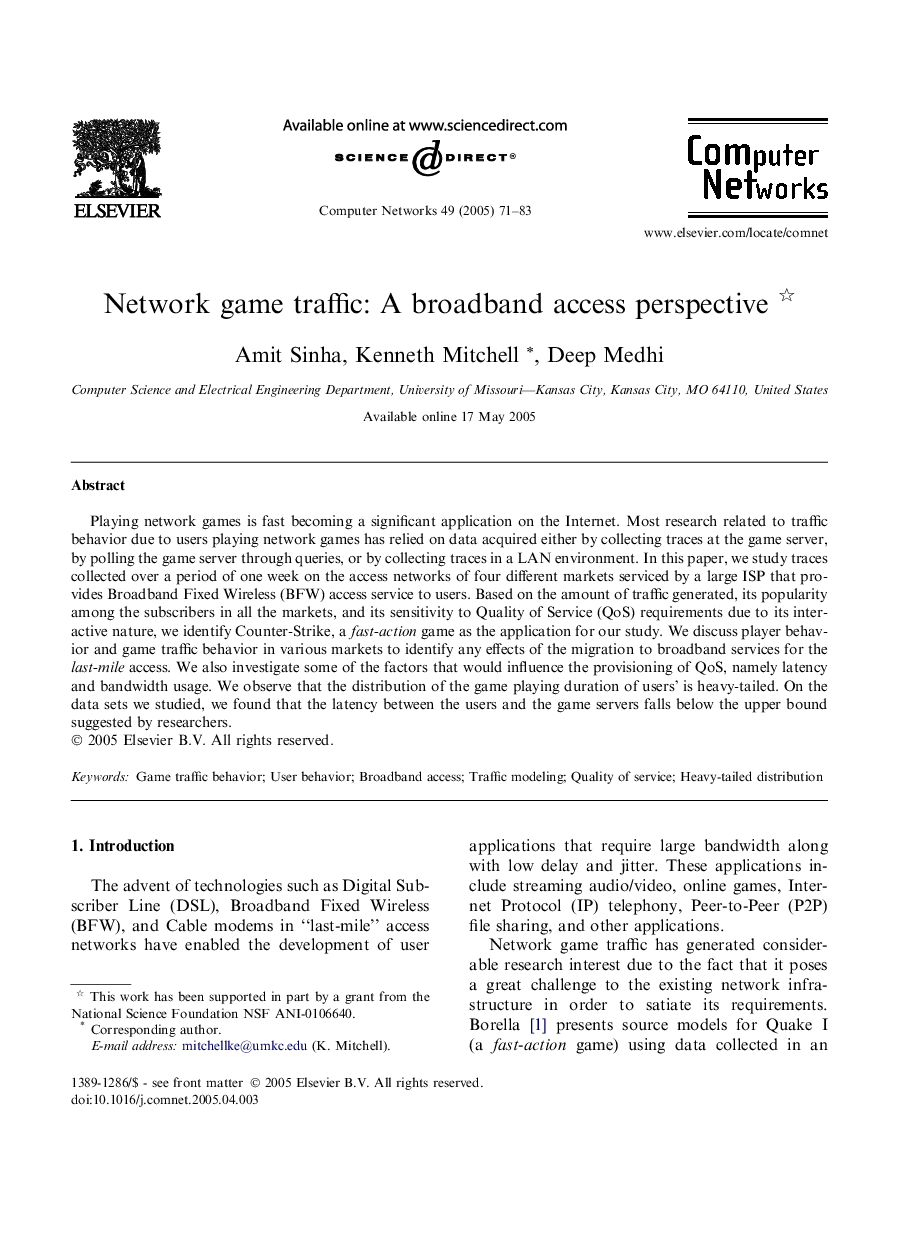| Article ID | Journal | Published Year | Pages | File Type |
|---|---|---|---|---|
| 10339121 | Computer Networks | 2005 | 13 Pages |
Abstract
Playing network games is fast becoming a significant application on the Internet. Most research related to traffic behavior due to users playing network games has relied on data acquired either by collecting traces at the game server, by polling the game server through queries, or by collecting traces in a LAN environment. In this paper, we study traces collected over a period of one week on the access networks of four different markets serviced by a large ISP that provides Broadband Fixed Wireless (BFW) access service to users. Based on the amount of traffic generated, its popularity among the subscribers in all the markets, and its sensitivity to Quality of Service (QoS) requirements due to its interactive nature, we identify Counter-Strike, a fast-action game as the application for our study. We discuss player behavior and game traffic behavior in various markets to identify any effects of the migration to broadband services for the last-mile access. We also investigate some of the factors that would influence the provisioning of QoS, namely latency and bandwidth usage. We observe that the distribution of the game playing duration of users' is heavy-tailed. On the data sets we studied, we found that the latency between the users and the game servers falls below the upper bound suggested by researchers.
Related Topics
Physical Sciences and Engineering
Computer Science
Computer Networks and Communications
Authors
Amit Sinha, Kenneth Mitchell, Deep Medhi,
